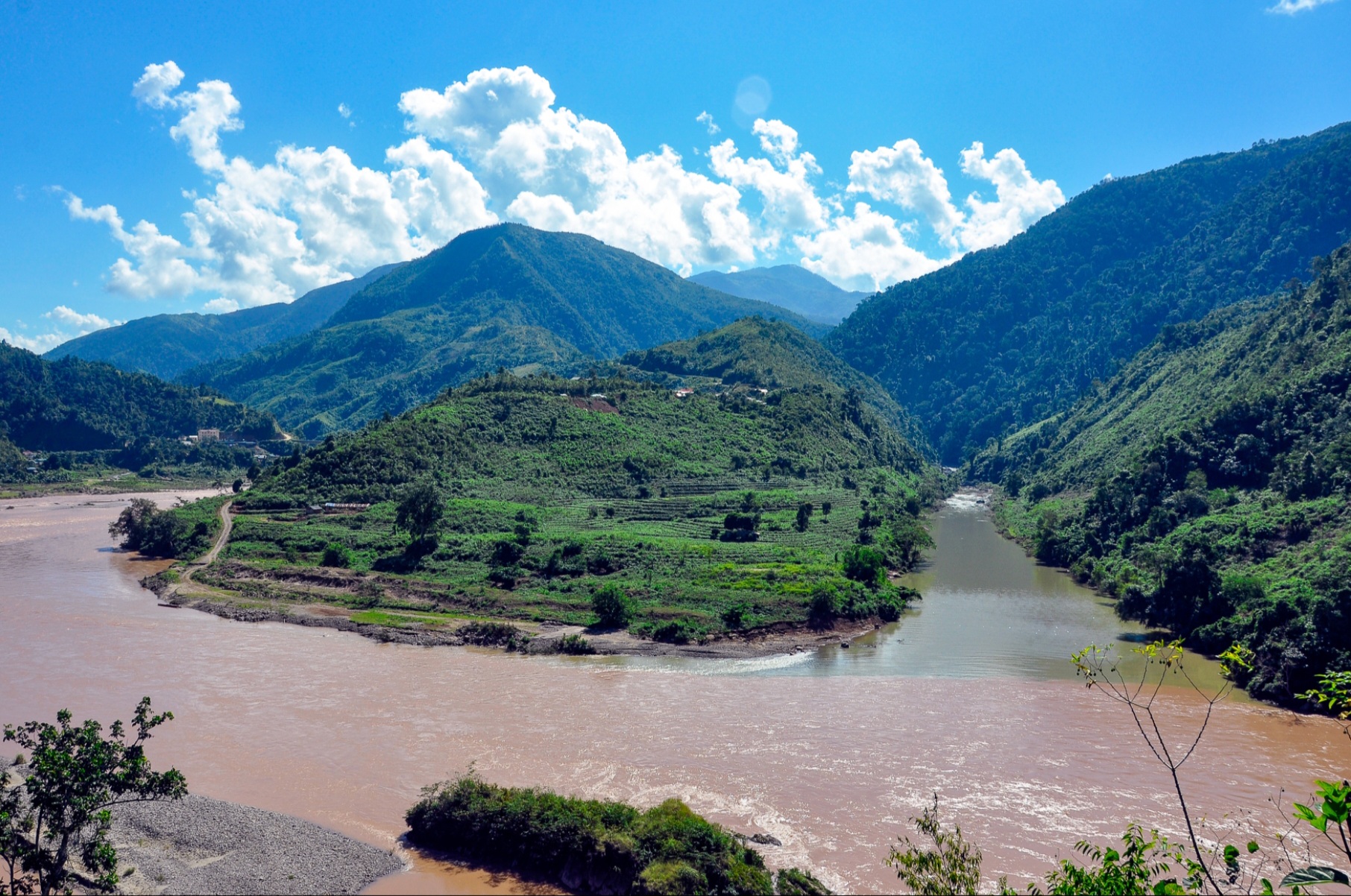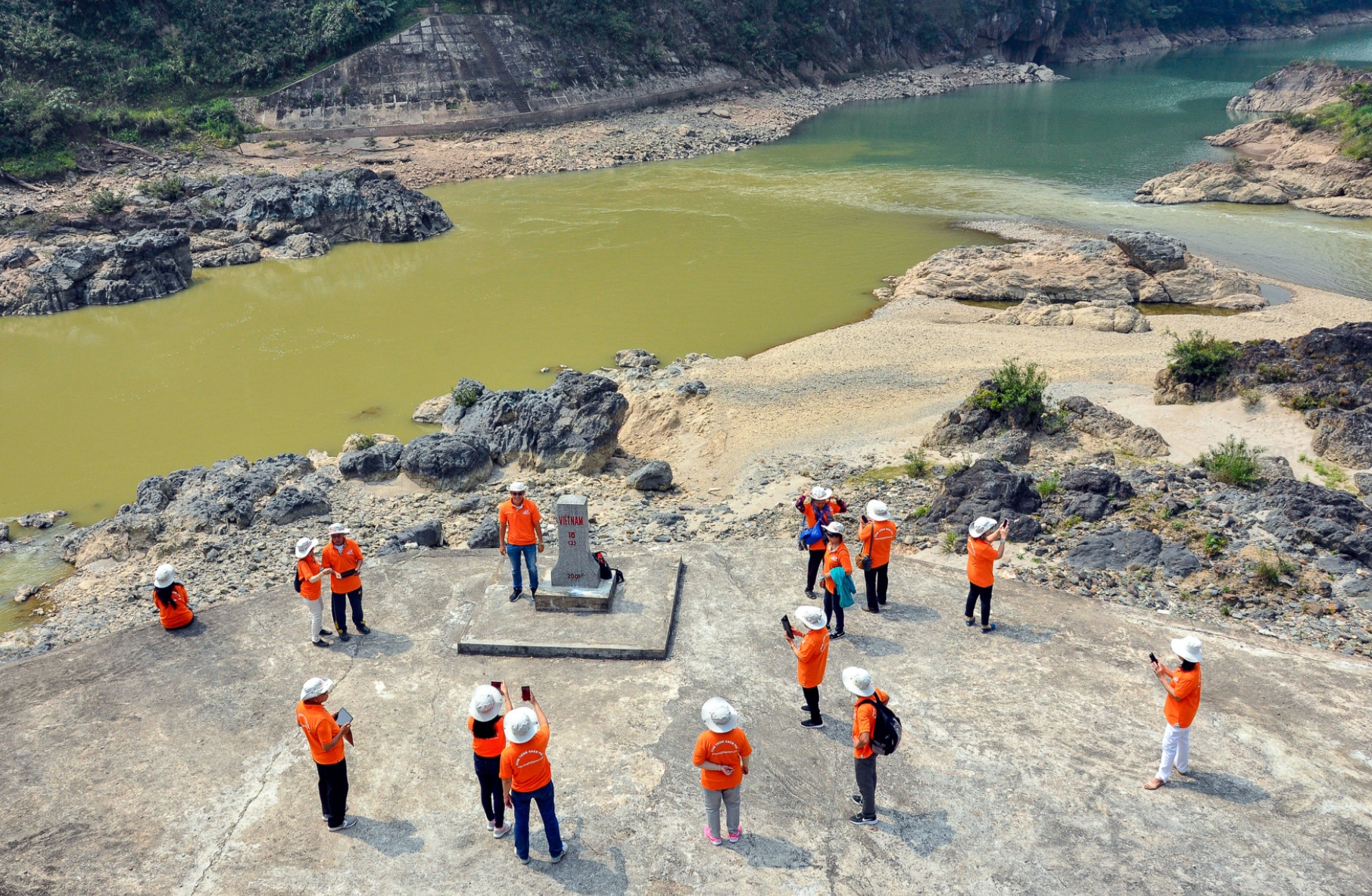
The land of Muong Nhe – Dien Bien and Muong Te – Lai Chau district has long been famous not only for the places A Pa Chai – the crossroads of Vietnam – Laos – China border or Keng Mo – where the Da River flows into Vietnamese land… This is also the land where 12 ethnic groups have lived for generations, of which the Si La and La Hu people are considered among the least populous ethnic groups in Vietnam.
Where the Da River flows into Vietnam
The Si La people 150 years ago, to avoid pursuit by other ethnic groups, wandered from Yunnan province (China) to Laos. They thought they would be able to live in peace, but they were oppressed by mandarins and village lords at that time, forcing them to once again continue migrating to Vietnam, and their fate was tied to the nomadic life and shifting cultivation passed down from From generation to generation, where the mountains and waters end, that is the upstream area of Song Da – Muong Te today.
Because they live in isolation, depend on nature, and have outdated farming methods like poking holes in seeds, in addition to hunger and poverty that persist all year round, they are also susceptible to diseases due to the sacred forests and toxic water and the consequences from The common practice of consanguineous marriage and child marriage has pushed the villagers to a state of low life expectancy, racial degradation, population decline, and sometimes facing the risk of extinction.

The migration of thousands of miles only ended when more than 40 years ago they left Da River – Muong Te district to go to Nam Son – Muong Nhe to establish a village. And the way of choosing land to build a village is similar to the Thai people – that is, sticking to the forest and being close to rivers to take advantage of hunting, gathering and exploiting aquatic products. In addition, thanks to the support of the state, the quality of life of the people is improving and becoming more prosperous. In particular, although the population is growing, if calculated together, the number of Si La people living in Muong Te and Muong Nhe districts is just under 1,000 people. So, currently, they are one of five ethnic groups including O Du, Brau, Ro Mam, Pu Peo and Si La with a population of less than 1,000 people – the smallest in Vietnam.
The most worrying thing is that due to the lack of writing, the Si La language is partly borrowed from the Ha Nhi and Cong people… Even their traditional customs have been deformed, assimilated or only remain in memory. memories of the elderly. Fortunately, the Si La woman’s outfit is still kept quite intact and is very different from the ethnic groups in the Northwest.

Shifting cultivation according to the yellow leaf season
In the Si La women’s costume, the most prominent thing is the shirt buttoned on the right armpit with a neckline, sleeves made of different colored fabric and the front of the shirt filled with aluminum coins. The skirt is usually black and ankle-length when worn or the hem of the skirt is tucked behind the back. Head scarves are distinguished by marital status, unmarried people wear a small white scarf to show purity and elegance. After getting married, the girls will roll their hair into a bun on their head and use a black cloth about 2 meters long to wrap it carefully so that it resembles a horizontal hat and then flip the end of the scarf back. In addition, the graceful beauty of the headgear is enhanced by the colorful, swaying tassels.
From Muong Nhe district, after a long journey along the border belt road, we arrived at Pac Ma – a small town in Ka Lang commune – Muong Te district when the afternoon sun passed and gave way to the clouds. all the way to the Da River. Returning to Pac Ma this time, we are not aiming for the wild natural landscapes in the Northwest but our destination is the Nam Pam village of the La Hu ethnic group – a people who once lived completely isolated in the middle of the jungle. no different from the forest people.

In fact, the La Hu people originated from the north, but due to being occupied by more powerful ethnic groups and constantly pursuing them, they were forced to wander to the south and have to wander from forest to mountainside. . They survive by gathering, trapping, hunting wild animals or finding gentle stretches of land, they build tents and thatch leaves to live temporarily to clear the land to sow seeds to plant corn and upland rice. However, when the leaves on the roof of the tent dry up and fall, they will leave it to heaven and earth to take care of the newly sprouted seeds on the ground… and go find other forest land to continue farming while also being wary of hunting. Only when they calculate that the corn, cassava, and upland rice previously grown on the fields are ripe will they return to harvest. Also because of their nomadic way of shifting cultivation according to the seasons, the yellow leaves on the tent roofs then leave, they also have another name, the Xa people with yellow leaves.
When the forests are exhausted, they live separately in the mountains and valleys, not integrating with other ethnic groups, so in addition to hardship, they also have to face diseases. The situation of inbreeding marriage is still common, brothers after two generations like each other and just go home, no need to calculate or discuss about lineage.
Furthermore, the fear of chaos in the past has caused them to always live alienated from the surrounding people… over time it has become a habit.

New life at the end of the Northwest sky
I still remember, in March 2017, a group of tourists from Ho Chi Minh City visited and gave gifts at Nam Pam village, even when the village head went to each house to call people to go to the village cultural house to receive gifts, but we I only received their searching eyes from afar. Even though they came down from the mountains 10 years ago to live in settlements, permanently ending the wild, backward lifestyle that had persisted for many generations after local authorities and border guards built villages and operated them. Encourage people to come home and start a new life.
From an ethnic group that was almost the most hungry and most backward of the 54 ethnic groups in Vietnam, over the past 20 years, the lives of the La Hu people have gradually stabilized. However, the lack of writing and the consequences of many lifetimes of wandering led to the loss of traditional culture
In particular, the traditional costume and part of the language, the La Hu people had to borrow from the Ha Nhi people – a densely living ethnic group accounting for 80% of the settlement population along the border area of Muong Te district – Lai Chau . Furthermore, they also learn life skills and ways of working from neighboring ethnic groups.
However, they still maintain the practice of hunting and trapping wild animals as a typical cultural nuance of this people. There are two ways of hunting that men are proficient in. One is personal hunting in the form of setting traps around fields or in places where deer, weasels, and wild chickens often go looking for food or using crossbows and handguns to chase and shoot them.
Second, villagers rely on collective strength to set traps, surround and shoot large animals such as bears, tigers, and wild boars. This method of siege and shooting requires the mobilization of many people, sometimes even supported by hunting dogs, so they only organize it when wild animals come to destroy the fields or someone in the forest discovers them.

Usually, the hunting group will send a few healthy pioneers to find traces of the animal. When they find them, they will alert them or use dogs to corner their prey and run into the circle of hunters hiding in trees or lurking in bushes to shoot and kill them as soon as they see them. When finished, everyone cuts the animal’s meat right on the spot to avoid taking it home and divides it clearly: the person who shoots down the animal will get half of the meat, and the remaining meat will be divided equally among those participating in the hunt. In the past, when the border areas of Muong Te (Lai Chau) and Muong Nhe ( Dien Bien ) still had many old forests, wild animals such as tigers and bears often came down to attack, and eating people was not a rare thing… Therefore, people shot them down. , in addition to the share, they are also rewarded with tiger skins or bear gallbladders as a form of recognition for eliminating dangers for the villagers.
A trip to explore border milestone 0 A Pa Chai – Muong Nhe – the place where the rooster crows in three countries, or milestones 17 and 18, watching the Da River flowing into Vietnamese land will definitely be more interesting if guests get one. Visiting villages of indigenous ethnic groups and hearing stories about a time of change from poverty, nomadic life and traditional customs, they have now settled down and left the “golden leaf” position.
($1~24,000 VND)
Photo,Video: Internet (Vinlove.net)
